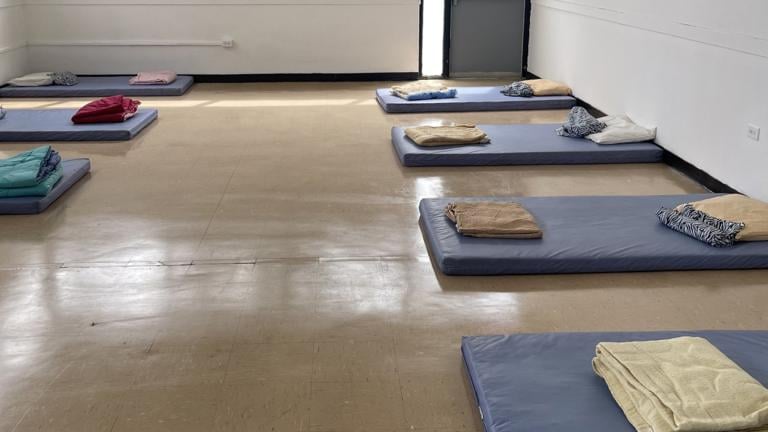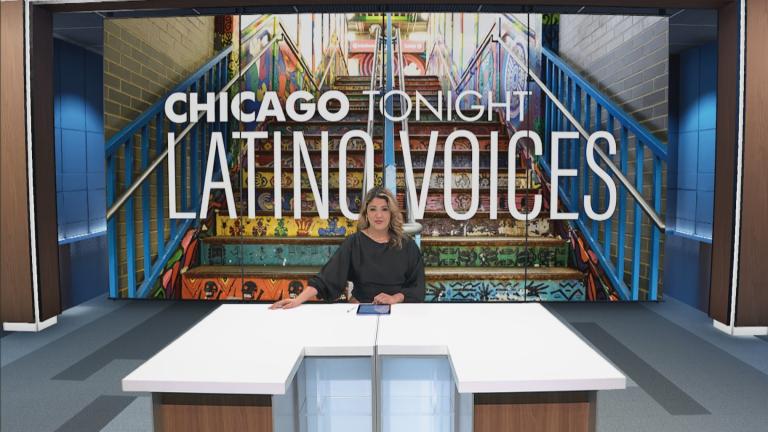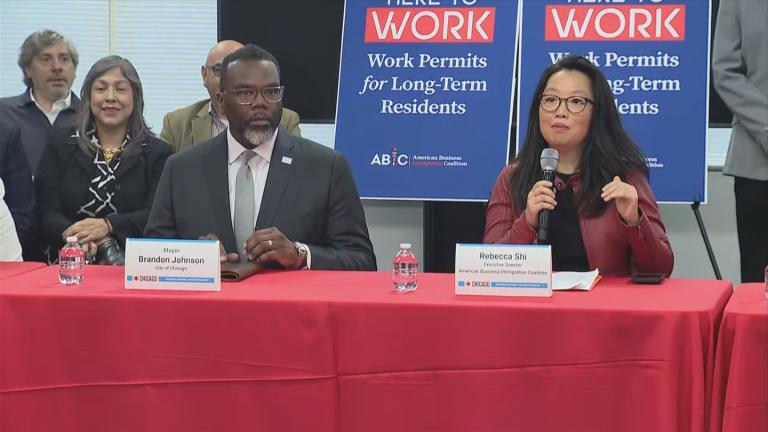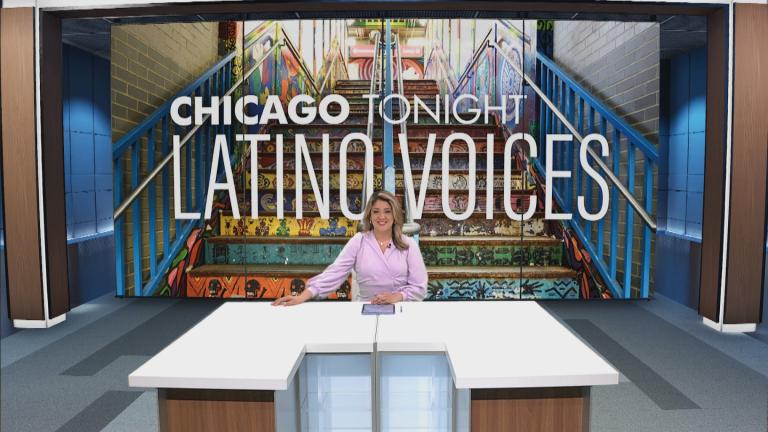The arch over 26th Street lets everyone who passes through know they are entering a largely Mexican enclave. But before it was rebranded as La Villita, it was a largely Czech neighborhood simply known as South Lawndale and that population shift wasn’t an accident.
The story of how La Villita and Chicago’s other Mexican enclaves developed is the subject of “Making Mexican Chicago: From Postwar Settlement to the Age of Gentrification.” The book walks the streets of the city’s Mexican communities and explores the history of the forces that shaped them.
Author Mike Amezcua, who is also a history professor at Georgetown University, says the story of Mexican migration to Chicago starts much like many other groups’ migration stories.
“The first immigrants from Mexico to Chicago came because of the kinds of industries that existed in the Midwest,” Amezcua said. “In Chicago in particular, such as railroads and the railroad network, steel plants in South Chicago as well as meatpacking and the packing houses in the Back of the Yards.”
Amezcua’s research uncovered a pivotal figure in Chicago’s Mexican immigrant community, real estate agent Anita Villarreal.
“She got her real estate license in the 1950s and upon being displaced, she began to consider how she could grow her business in communities like Pilsen and South Lawndale. These were communities that while we often think of them now as the mecca of Mexican Chicago were not very Mexican,” Amezcua said. “Anita began to buy and sell property in these neighborhoods. Not only that, she also had the foresight to imagine what it would take to sell a home to a Mexican immigrant. And often that involved building up the commercial thoroughfare of 18th Street and 26th Street in ways that would be hospitable and familiar to Mexican immigrants so that they can buy their groceries, buy their pan dulce. And in those ways Anita came to shape Pilsen but more importantly, La Villita by opening up neighborhoods and properties to representing the community.”
In “Making Mexican Chicago: From Postwar Settlement to the Age of Gentrification,” Mike Amezcua explores how the Windy City became a Latinx metropolis in the second half of the twentieth century, offering a powerful multiracial history of Chicago that sheds new light on the origins and endurance of urban inequality. The following excerpt details some of the ways the city’s Latino civic leaders and neighborhood groups used grassroots methods to gain political power and community control during the 1970s and ‘80s.
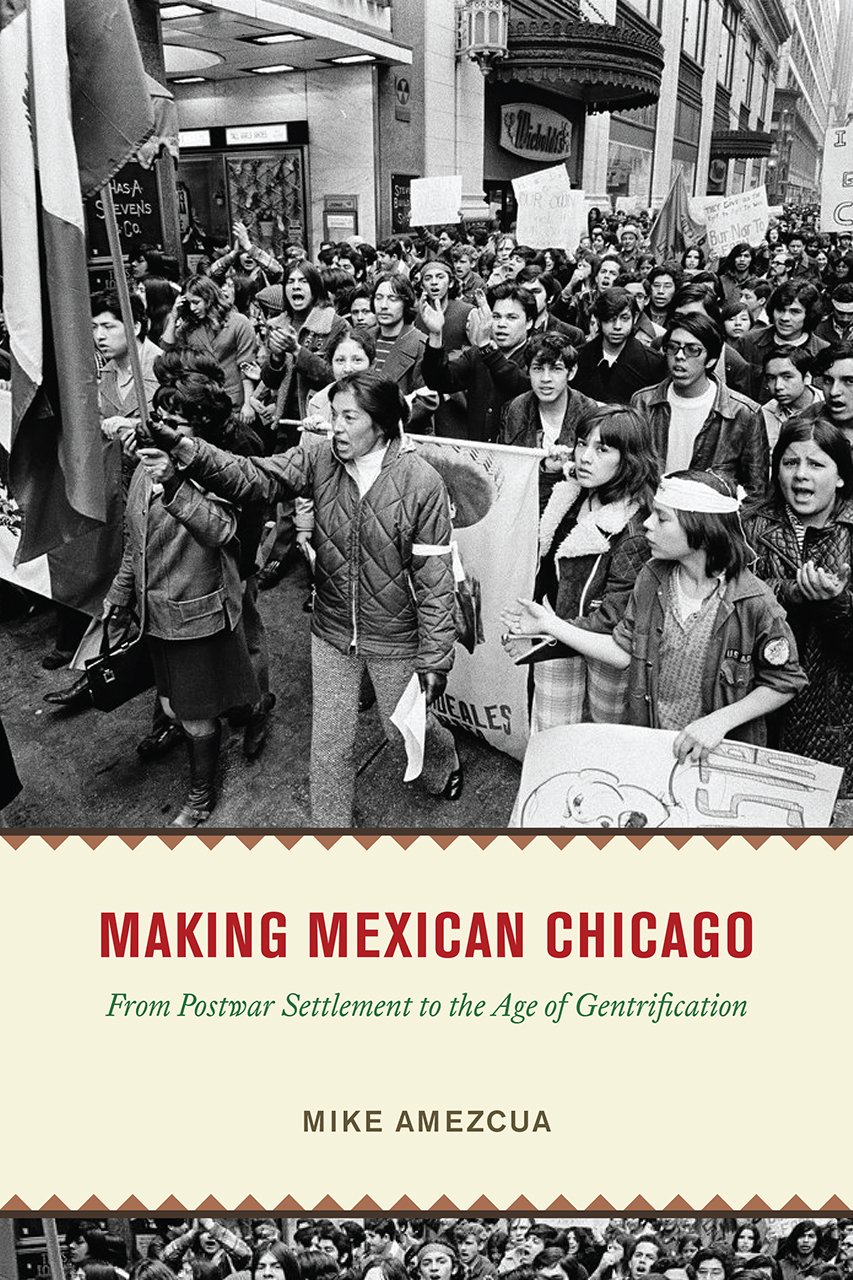
In October 1981, scholars, artists, and community residents gathered at UICC (University of Illinois at Chicago Circle) for a conference entitled “Art, Architecture and the Urban Neighborhood.” Perry R. Duis, a professor of urban history, praised the wave of community revolt that had swept through Pilsen: “Instead of a plan imposed entirely from outside the community, [Benito Juárez High School] was designed with the help of Pilsen residents.” Duis remarked on how residents carried out their own aesthetic vision: “The sloping walls reflect the Mexican architectural heritage, not aesthetic ideas imported from outside the neighborhood.” Moreover, “the high school project is also significant because it demonstrates one approach to the serious question of urban redevelopment and the rejuvenation of neighborhoods.”
As Duis spoke about building an architecture of Latino empowerment, the United Neighborhood Organization (UNO) was setting out to build another movement. Looking to address not just Pilsen, but other Latino colonias, and the political and economic subjugation the very word implied, the community group mounted a campaign to address racial injustice and infrastructural inequality. At the start of the 1980s, plant closures, overcrowded and underfunded schools, and blighted housing conditions continued to grip Latino neighborhoods, while becoming the battleground sites on which Latinos sought to build neighborhood-based power. This new decade would be a period of significant grassroots political mobilization for Latinos themselves, driven by demographic growth, economic and structural neglect, and an inspired politics of self-determination.
When Richard J. Daley died in 1976, he left a political machine in place that could still control and undermine growing Latino political power. City hall continued his long tradition of redrawing district and ward boundaries to prevent Latino supermajorities from manifesting. But gerrymandering could not hide the fact that Latino settlement was widening on the heels of white depopulation. In the Southwest Side and the Bungalow Belt, from 1970 to 1980, population numbers dipped in most communities, with the exception of Pilsen, which saw a minor increase, and Little Village, which showed a significant boost from 62,895 in 1970 to 75,204 in 1980. Pilsen and Little Village were becoming denser during this decade, but Mexicans were also moving south of the river, in hopes of flipping formerly white neighborhoods to Mexican ones.
In the meantime, areas surrounding the Downtown Loop were turning over as well. From the late 1970s to the 1990s, the evisceration of the white tax base continued to guide city hall politics as boosters, planners, and bureaucrats pursued redevelopment schemes to flip valuable real estate in the central city, hoping to bring back suburbanites. In Pilsen, speculators of all stripes, from lawyers to slumlords to former city bureaucrats, seized on this moment to flip their properties and create “colonies” of their own to attract “urban pioneers” and “white homesteaders,” displacing poor and working-class Latinos in the process. Community organizations saw this as a project of cultural erasure and outright colonization.
Chicago’s late twentieth-century reshuffle did have an economic rationale. In an age of shuttered factories and economic restructuring, reshuffling people across the metropolis could draw new value out of old spaces. Now there was more land to flip thanks to white depopulation and the Community Reinvestment Act (CRA) of 1977, which outlawed classic segregation tools. Flipping neighborhoods from white to Brown or Black, or even from Black and Brown to white, became an economy in its own right in the neoliberal era, when the postindustrial city shifted to dependence on privatized capital and nonstate entities. An entire apparatus formed around it, primarily through the CDC (Community Development Corporations) model, which competed in a marketplace for private (corporate, philanthropic, and foundation) and federal monies to improve, change, or save neighborhoods. Enterprise and empowerment zones were quickly added to the menu of economic development, providing tax incentives for urban space.
Latino civic leaders and neighborhood groups mounted grassroots campaigns for political power and community control. In the political arena, Latino independents challenged the machine and helped build a racial coalition movement that, in 1983, elected Harold Washington as the city’s first Black mayor along with a wave of Latino challengers to the city council. But the newfound colonia clout revealed internal divisions as well. Machine loyalists and independents differed over postindustrial politics and how best to invest and revitalize Latino neighborhoods. Some civic leaders— and city hall— viewed ethnic tourism, urban travelers, and the branding of Latino neighborhoods as a positive way to generate needed revenue; others saw it as an invitation to speculators that threatened the relocation of residents. Just as East Pilsen’s art colonists grappled with living in a “slum,” as one artist put it, Mexican immigrants, Mexican Americans, and Latinos in general had to make meaning out of their new environs in the ever-expanding Far Southwest Side. Throughout the 1980s and 1990s, Latino working-class culture was dispersing, relocating, and suburbanizing as residents shaped their bungalow landscapes and became postindustrial survivors.
While community groups faced federal austerity against urban America, privatized capital, bankers, and strategists pushed an economic rationalization for reshuffling people across the metropolis, at times even packaging the process as the end of segregation. But whether one was displaced by gentrification or living in a working-class bungalow on the Far Southwest Side, what endured was the landscape of whiteness that continued to shape these spatial and economic moves. The real estate market had used Latino buffer communities for years to negotiate white ethnic fragility and hostility, premised on anti-Black racism and, at times, anti-Brown racism or fear of Global South immigrants. Indeed, by the 1990s the old color lines of the mid-twentieth century had somewhat softened, but persistent class and racial inequality continued to resegregate people across metropolitan Chicago. The flipping of colonias is both a history of erasure and of new beginnings. As such, a new colony of a different color was taking hold in Pilsen.

